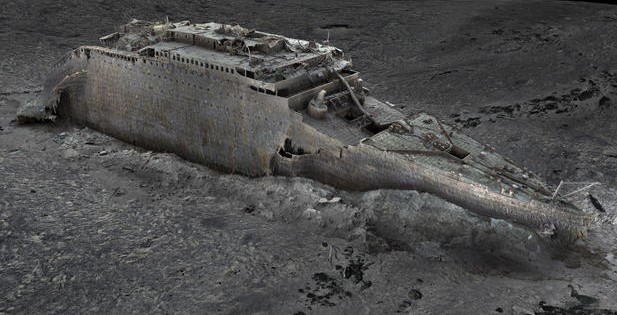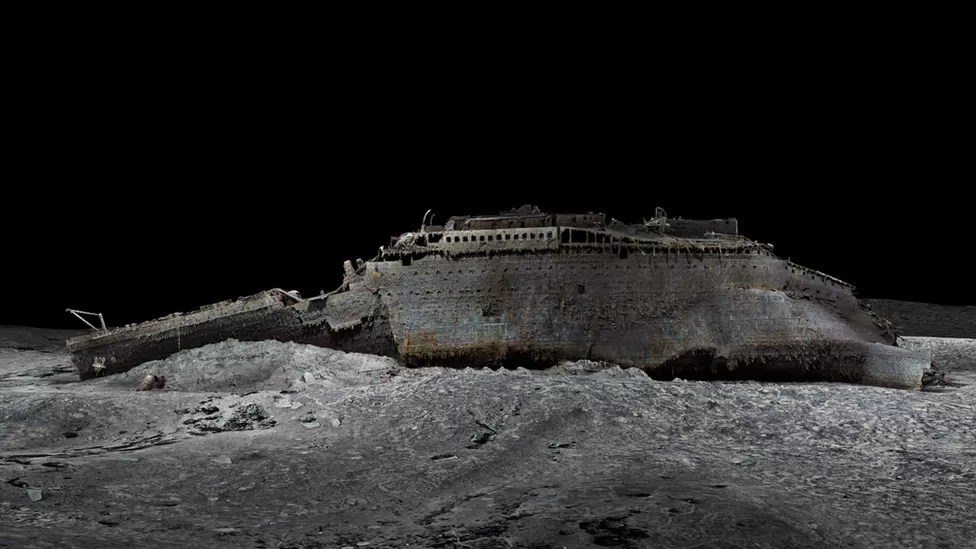New images of the world’s most famous shipwreck are showing the Titanic like it’s never been seen before.

Remarkable 3D visualization, achieved by deep-sea mapping technology, shows what the RMS Titanic would look like resting on the ocean floor if the water around it were removed.
The hope with these images, according to researchers, is that the unprecedented views will shed new light on how the ill-fated ocean liner sank more than a century ago.
The scan was conducted last year by deep-sea mapping company Magellan Ltd., in partnership with Atlantic Productions, a company that is currently making a film about the project.
“I felt there was something much bigger here that we could get from the Titanic,” Anthony Geffen, the CEO of Atlantic Production, told CBS News. “If we could scan it, if we could capture in all its detail … we could find out how it sank and how the different parts of the boat fell apart and we can find a lot of personal stories down there as well.”
The daunting task was a huge success, despite the ship lying 3,800 metres below sea level off the coast of Newfoundland.
The photos show intricate details that are nothing short of astonishing.
It’s the first full-sized scan of the wreck, which lies in two parts. The bow and stern are approximately 800 meters apart and surrounded by a huge field of debris.
The scan is detailed enough to show the serial number of one of the propellers. The images also show the bow still recognizable, while the stern was crushed due to its rapid descent and crashing into the sea floor.
Since the wreck was discovered in 1985, it’s been examined in detail but only through fragmentary snapshots. The quickly-deteriorating materials, too, have made examination of the boat tricky.
“What we now have for the historical record is, before it falls apart, literally a record of everything to do with the wreck of the Titanic, which will be around forever,” Geffen told CBS.

The images were achieved by remotely operated submersibles that dedicated more than 200 hours to meticulously surveying the wreckage. The team was able to collect more than 700,000 images from various angles, which allowed the detailed 3D reconstruction.
“Mapping every square centimetre, including seemingly unremarkable areas like the debris field and mud, was essential to create a cohesive representation of this significant site,” Gerhard Seiffert, Magellan’s lead planner of the excursion, told the BBC.
The Titanic, thought to be unsinkable at the time, hit an iceberg on its maiden voyage from Southampton in the U.K. to New York on April 15, 1912. The tragedy claimed the lives of more than 1,500 people.












Comments